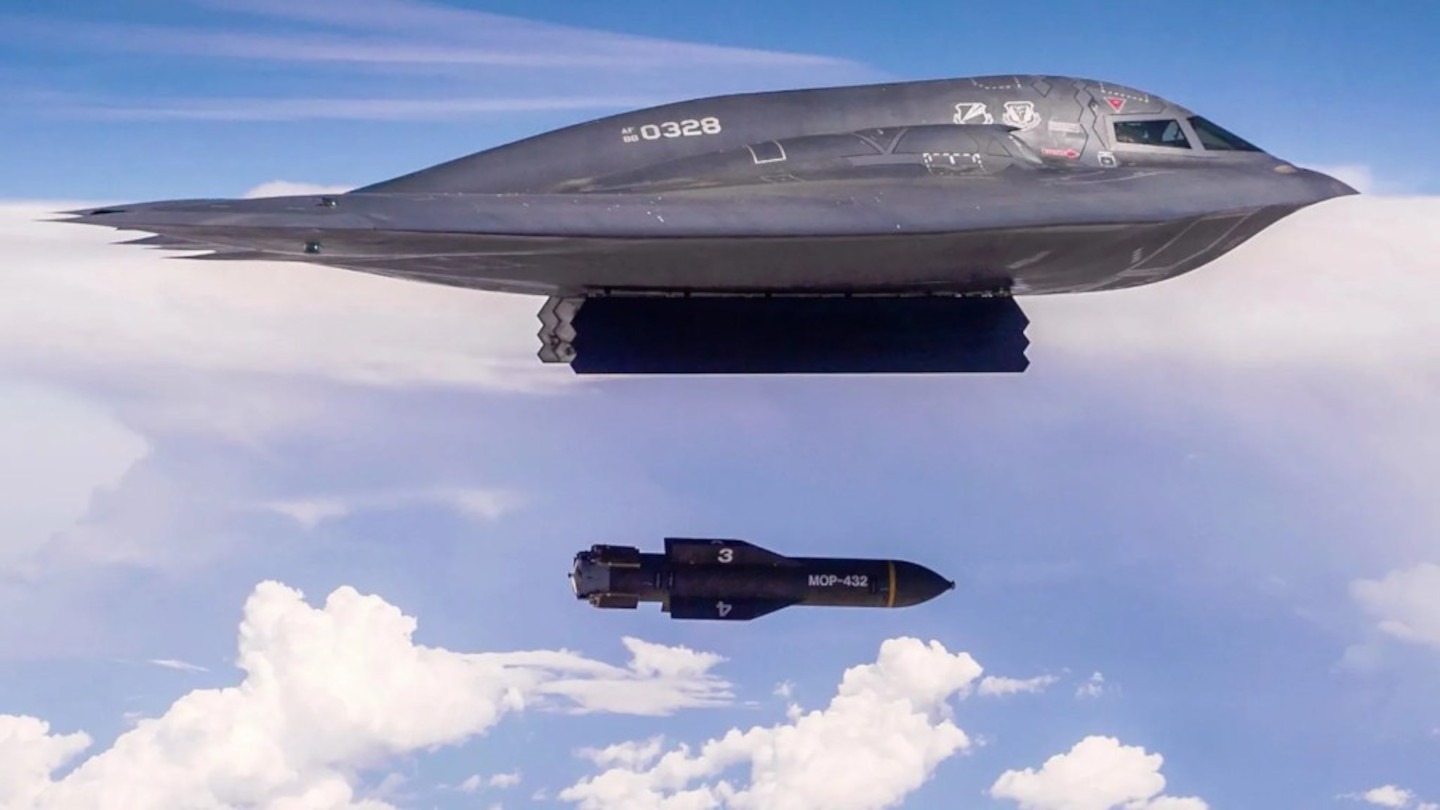El primer uso en combate de las bombas rompebúnkeres GBU-57/B Massive Ordnance Penetrator (MOP) de 13.668 kg por parte de la Fuerza Aérea de EE. UU . en recientes ataques contra instalaciones nucleares iraníes ha renovado la atención sobre la búsqueda de un sucesor. Ya existía un gran interés militar estadounidense en un nuevo Penetrador de Próxima Generación (NGP) cuando el MOP entró en servicio a principios de la década de 2010.
The U.S. Air Force’s first combat employment of 30,000-pound GBU-57/B Massive Ordnance Penetrator (MOP) bunker buster bombs in recent strikes on Iranian nuclear sites draws new attention to work toward a successor. There was already very active U.S. military interest in a new Next Generation Penetrator (NGP) when the MOP first began entering service in the early 2010s.
B-2 Spirit stealth bombers dropped 14 GBU-57/B on targets in Iran – 12 on the enrichment facility at Fordow and two more on the one at Natanz – during strikes this past weekend dubbed Operation Midnight Hammer, which you can read more about here. The B-2 is the only aircraft cleared to employ the MOP operationally, but the forthcoming B-21 Raider stealth bomber is expected to be able to employ them, as well. B-52 bombers have also dropped the huge bunker busters during testing. The existing MOP stockpile is understood to be relatively small, but Bloomberg reported last year that work was being done to help triple or even quadruple the annual production capacity of the munitions.
The 20-and-a-half-feet-long GBU-57/B is a precision-guided bomb that consists of a penetrating “warhead,” which has its own designation (BLU-127/B), along with a GPS-assisted inertial navigation system (INS) guidance package, specialized fuzes, and other components. The explosive content of the MOP, which also has a diameter of 31-and-a-half-inches, is only roughly 20 percent of its total weight.
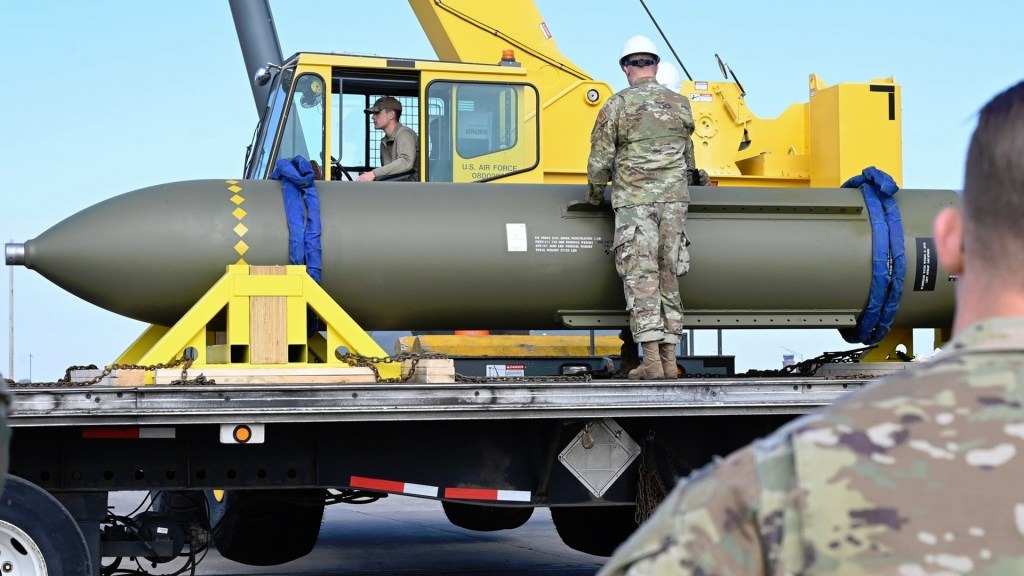
The most recent publicly stated requirements for the NGP come from a contracting notice the Air Force put out in February 2024. It called for a warhead weighing 22,000 pounds or less, and that would be “capable of blast / frag[mentation] / and penetration effects,” but did not specify a desired gross weight for the entire munition. No prospective dimensions were provided, either.
“The prototype penetrator warhead design effort should allow integration of technologies acquired and lessons learned under previous penetrator warhead developments to meet performance requirements for the HDBT target set,” the contracting notice added. “The USAF will consider novel, demonstrated, or fielded Guidance, Navigation & Control (GNC) technologies with viability for integration into a warhead guidance system design that can achieve repeatable, high accuracy performance in GPS aided, degraded, and/or denied environments.”
The notice also said that a “terminal accuracy” of “CE90 w/in 2.2m both in GPS aided, degraded, and denied environments” was desired. What “CE90 w/in 2.2m” means in layman’s terms is a munition that can hit within 7.2 feet (2.2 meters) of a specified impact point at least 90 percent of the time. This is a very high degree of required accuracy, especially for employment in GPS-degraded or denied environments. For comparison, the Air Force says, on average, GPS-assisted INS-guided Joint Direct Attack Munition (JDAM) bombs can hit within 16.4 feet (five meters) of designated target coordinates under optimal conditions, but that this can grow to nearly 100 feet (30 meters) if GPS connectivity is lost. While the exact terminal accuracy of the existing MOP is unknown, post-strike imagery from Fordow and Natanz points to an extreme degree of precision.
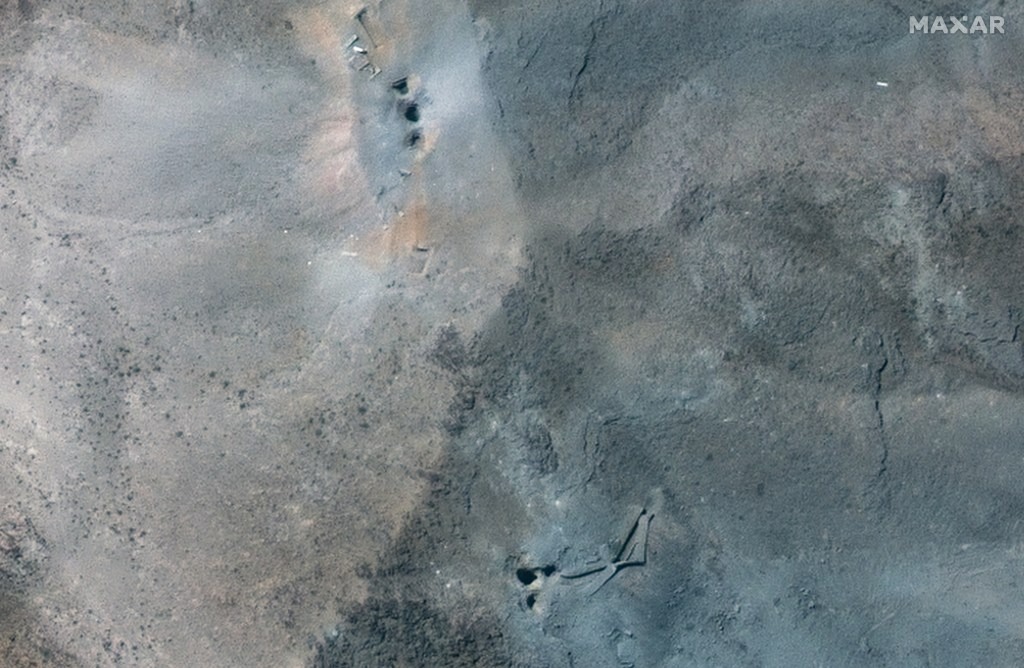
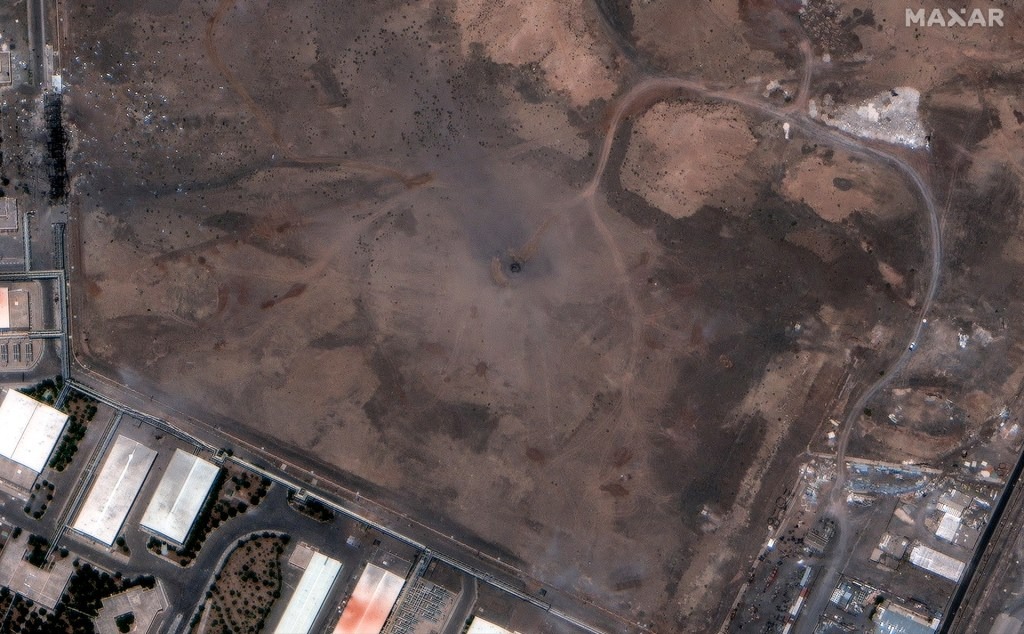
The NGP contracting notice put out last February also mentions “possible integration of embedded fuze technology,” but does not elaborate. Reliable fuzing, in general, is particularly important for bunker buster bombs, the components of which have to be able to withstand additional forces as the munition burrows through hard material.
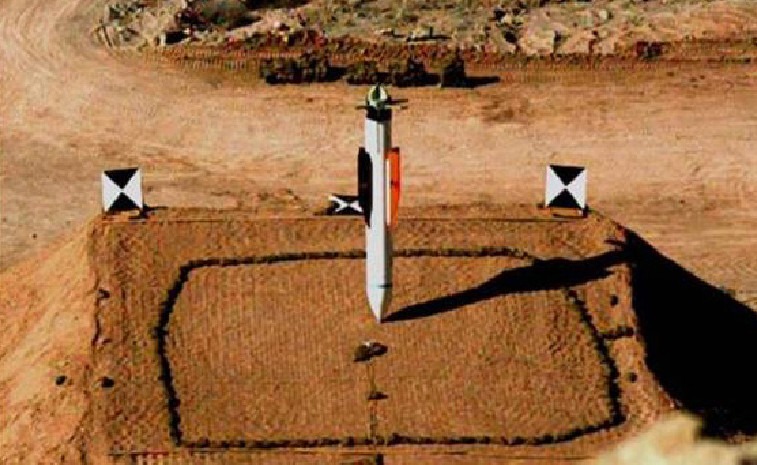
Bombs like the MOP and any future NGP that are designed to penetrate very deeply have additional specialized fuzing needs, especially for employment against targets where pre-strike intelligence about the exact depth and/or physical layout is limited. Work on advanced void-sensing fuzes that can detect when a munition has breached into a sufficiently large space, such as a room in an underground facility, is an area of development that has already been of particular interest for the U.S. military for years now. A fuze that is able to just effectively ‘count’ floors to help determine depth to detonate the bomb at a certain level for maximum damage would also be a useful addition.
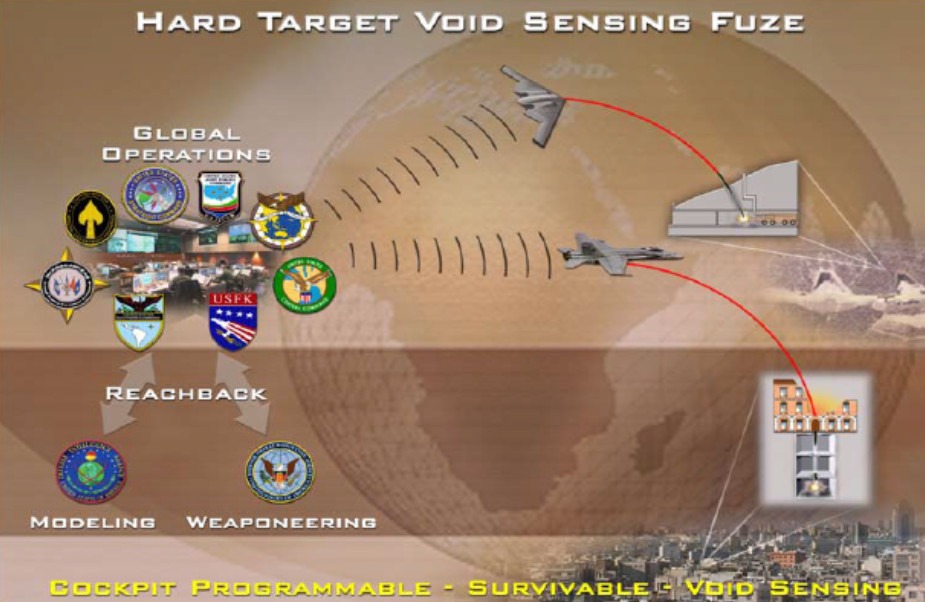
As already noted, the U.S. military was already looking ahead to a future NGP when MOP began entering service in the early 2010s. The February 2024 contracting notice specifically mentions “the 2012 Hard Target Munitions (HTM) Analysis of Alternatives (AoA) and HTM AoA Excursion from 2019” as having contributed to the requirements for the next-generation bunker buster. The GBU-57/B’s own development, which the Pentagon’s Defense Threat Reduction Agency (DTRA) carried out in cooperation with the Air Force, dates back to at least 2002. Work on MOP also notably began as a so-called “quick reaction capability” effort to meet pressing operational needs, rather than a full program of record, and the design has been upgraded several times in the past 15 years or so.
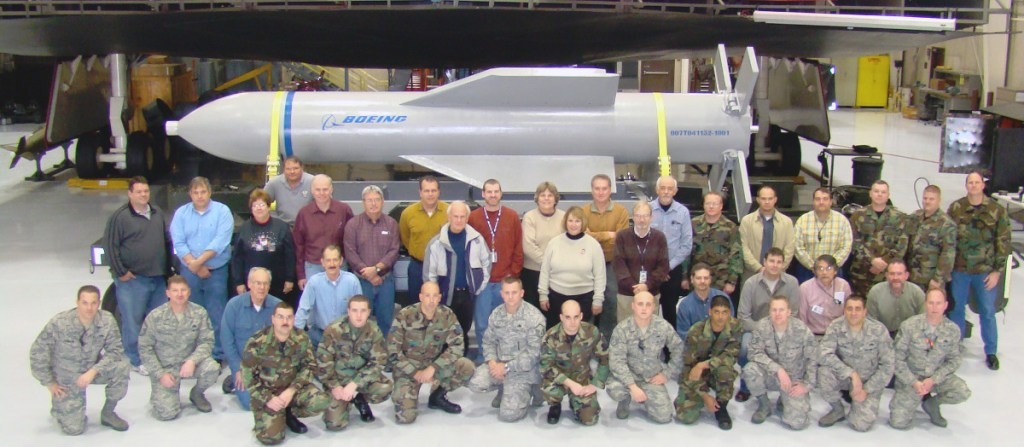
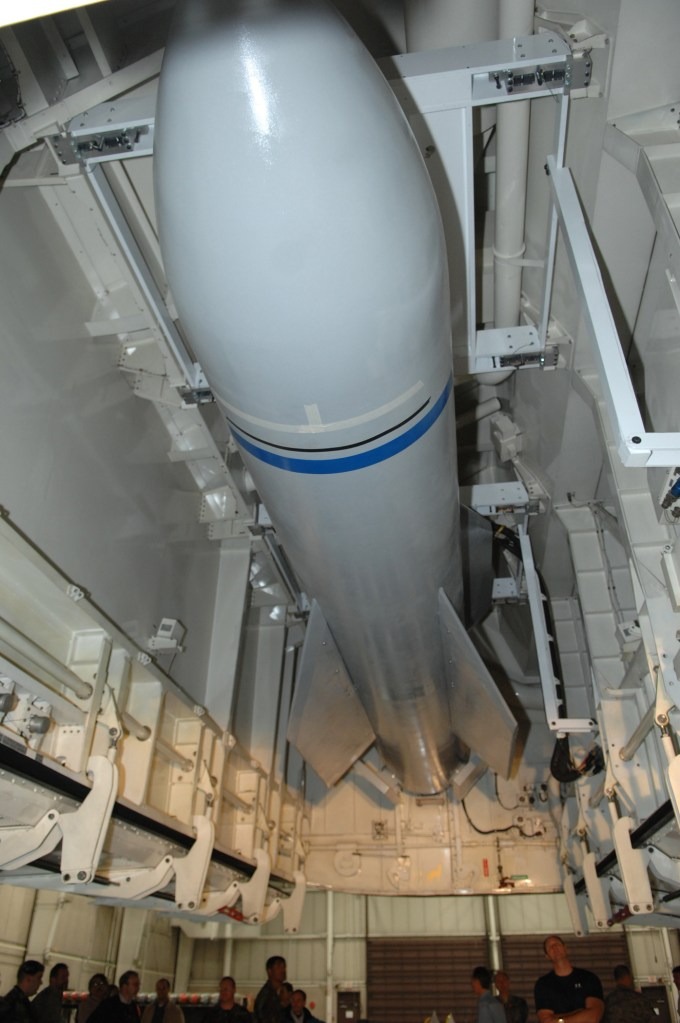
In addition to the requirements laid out in the contracting notice last year, the Air Force has said in the past that one of its key areas of interest for NGP is the addition of a powered standoff capability. Notional renderings have shown a design with a rocket booster. MOPs are unpowered and have to be released close to the target, a key reason why the highly survivable B-2 is currently the only operational delivery platform.
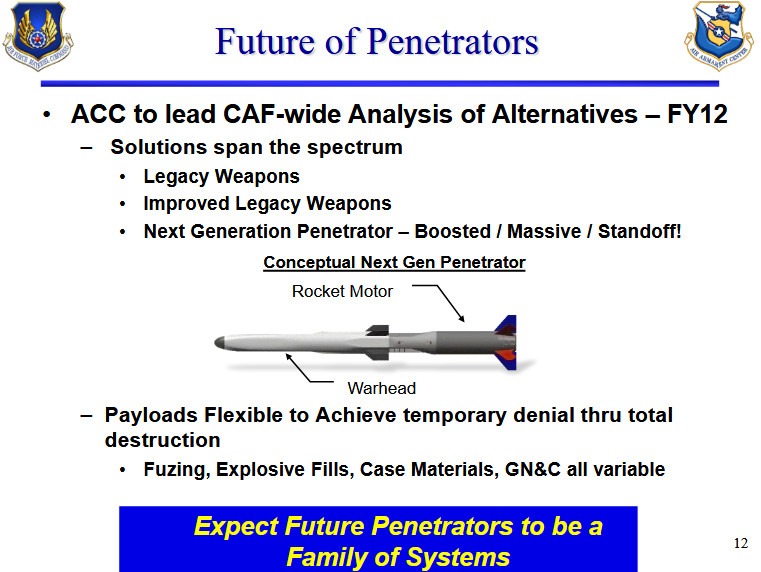
The Air Force has also said it is interested in a future NGP with the ability to prosecute more hardened and/or deeper targets, as well as enhanced and potentially scalable terminal effects. The current maximum depth that MOP can penetrate down to is unknown, but it is at least 200 feet (60 meters), according to publicly available data. Subsequent upgrades may have increased its penetrating capability substantially.
The Air Force has also talked previously about the possibility of NGP being a family of systems, rather than a single munition, and has also tied it to the secretive Long Range Strike (LRS) family of systems. The best-known member of the LRS ‘system of systems’ is the B-21 bomber, but it includes the stealthy AGM-181A Long Range Stand Off (LRSO) nuclear-tipped cruise missile and many other elements, as you can read more about here.
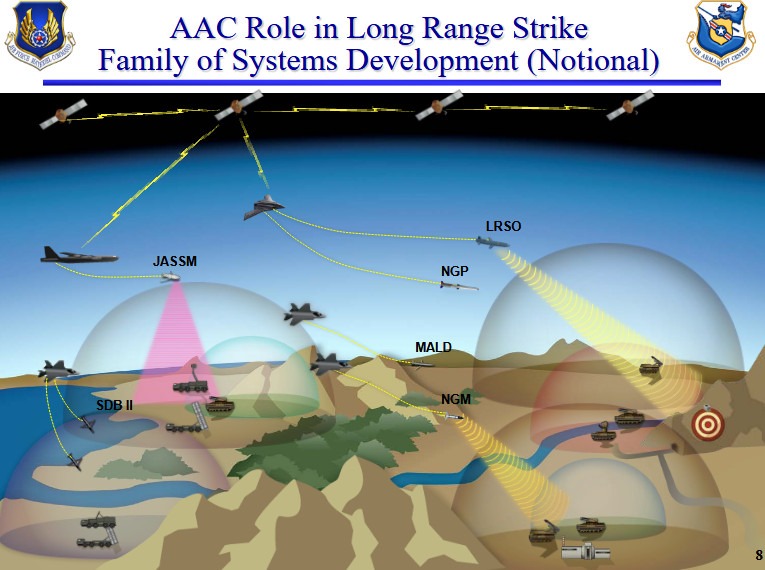
In 2020, the Air Force publicly disclosed interest in a separate next-generation Global Precision Attack Weapon (GPAW) bunker buster bomb that would be small enough to be carried internally by a stealthy F-35 Joint Strike Fighter. The service also began fielding a new precision-guided 5,000-pound-class bunker buster, the GBU-72/B, sometime in the past few years. What appears to be the first reported operational use of GBU-72/Bs came last year during strikes against Iranian-backed Houthi militants in Yemen.
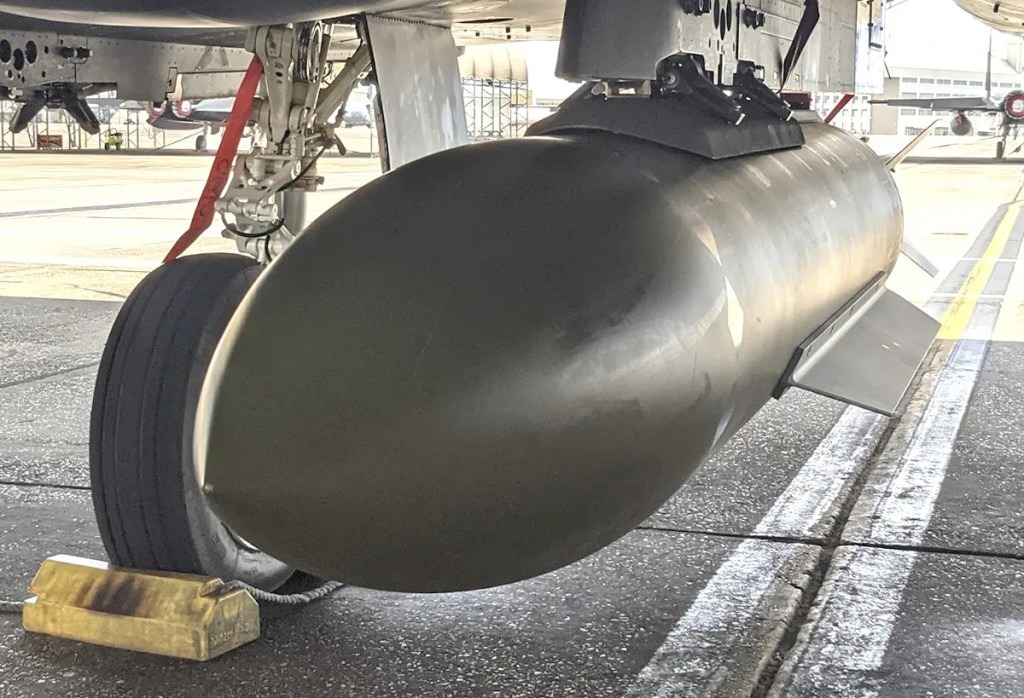
The B-21 presents its own specific considerations for both MOP and a future NGP. The B-2 can already only carry two MOPs at once, and the smaller Raider is expected to be able to lug just one. Taking the example of Operation Midnight Hammer, it would’ve taken twice as many B-21s to carry out that mission. As such, a new bunker buster bomb that sits somewhere in the wide range between the GBU-72/B and the GBU-57/B could be a major boon for pairing with the Raider. It is also worth noting here that the Air Force does currently plan to acquire a B-21 fleet that will be significantly larger than its current B-2 force.
The assessed outcome of the GBU-57/B strikes on Fordow and Natanz will now be another factor for the Air Force to consider when it comes to the future NGP. Though the U.S. military says the strikes successfully hit the intended targets, significant questions remain about the actual damage caused to the underground Iranian facilities. Well before Operation Midnight Hammer was launched, a debate had emerged about whether Fordow, in particular, could be beyond the reach even of the MOP.
For the U.S. military, the value of having a non-nuclear means to prosecute very deeply-buried targets from the air extends well beyond Iran. North Korea has also been notably expanding its underground infrastructure, a trend that has been driven in no small part by the threat of strikes from the United States.
MOP, as well as any future NGP, could be called upon in any future conflict against a larger adversary like China or Russia, both of which have long histories of building deep underground facilities, including mountain caverns for aircraft and submarines. In January, the Financial Times newspaper published a detailed piece on the Chinese People’s Liberation Army’s (PLA) construction of a new 1,500-acre command center complex in Beijing that includes a major subterranean component. Additional details that emerge about the MOP strikes on Iran might further fuel global trends regarding the construction of new underground facilities.
The video below includes a clip of a B-2 bomber dropping a GBU-57/B during a test.
An NGP bunker buster with standoff capability could also be not just valuable, but increasingly critical as the air defense ecosystem expands and evolves. The Air Force has separately assessed that anti-air missiles with ranges of up to 1,000 miles will be among the threats it has to contend with by 2050. Even very stealthy aircraft like the B-2 or the B-21 will be highly challenged to make direct attacks against heavily defended key targets of a peer state, especially during the critical opening days of a high-end conflict.
As it stands now, the current NGP effort, at least from what the Air Force has shared publicly, is still at a very early stage. The service has said it is interested in taking delivery of an initial set of around 10 subscale test articles, as well as three to five full-scale warhead prototypes, within 18 to 24 months of a contract award, but when that deal might be signed is unknown. There does not appear to be a publicly stated timeline yet for when NGPs might begin to enter actual operational service.
Regardless, the U.S. military has now demonstrated the value of the MOP’s very deep-penetrating bunker buster capability in a real-world operation, making it a household name and cementing its place in the history books. This is likely to put new emphasis on the long-standing interest in a potential successor and prompt more resources to be put toward work on a future NGP.
Fuente: https://www.twz.com

